Above all, Jonathan Ward is a gearhead. His Los Angeles-based company, ICON4X4, produces what some believe are the highest caliber SUVs in the world. He tears vehicles apart and puts them back together in new and unexpected ways, elevating utilitarian machines into a purified expression of mechanical ability. Last year, the news broke that Ward was entering the watch business with the ICON Duesey, a timepiece inspired by classic Duesenberg automobiles from the early-20th century. Like the souped-up and customized Toyota Land Cruisers that emerge from his workshop, the ICON Duesey is not only an ode to mechanical creations of decades past, it’s a symbol of a man’s passion for creation and individuality.
Recently, I sat down with Ward in a crowded Manhattan coffee shop to chat about the ICON Duesey which is now available for purchase. Read on to learn about Ward’s creative tendencies that lean toward what he describes as “bespoke utility,” his experiments with VantaBlack, and a hint of what his next timepiece might look like.
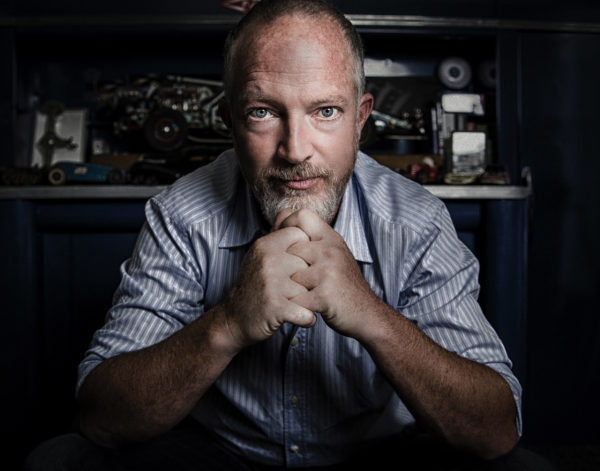
Logan R. Baker: So what attracted you to watches in the first place?
Jonathan Ward: I was a goober as a kid, taking apart my piece-of-shit electric alarm clock. And geekin’ on the gears and seeing if I could put it back together and make it work again, which, was rarely the case. And my grandad, I remember, we’d get really bored, my sister and I, when we’d go visit my grandparents in remote Virginia. And one of our favorite habits, when we were really young, was to go up in the attic. It was one of those old school, very Americana, next to the church, white picket fence homes with a big-ass attic. So we used to go dig through there. And as a really young kid, I remember finding one of his rectangular Hamiltons. And just really getting fascinated by it. Years later, I ended up stealing it from him and having it restored. I just gave it back to him for their fiftieth anniversary.
LRB: I’m sure he loved that.
JW: I remember my dad having cool watches, so it’s kind of always been a thing for me. I was a mechanical geek. The continuity, the similarities, obviously, between vehicles, and watches is just immediate.
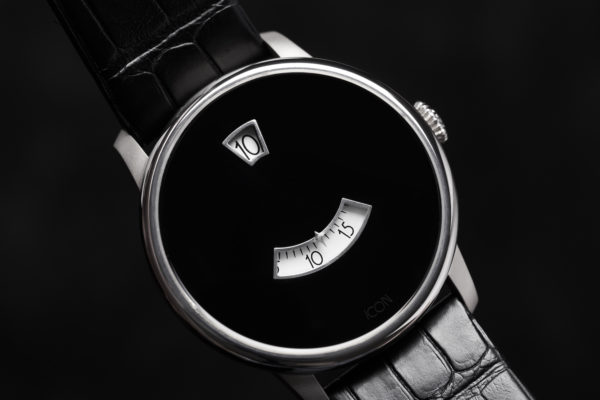
LRB: Why do you think there is so much crossover appeal between watch and car people?
JW: Just unnecessary, if it’s the right car, unnecessary attention to detail. The advancement of and use of finishes and materials and such. When I was eight I started sketching cars. And around the same time, I was starting to sketch watches. I just never thought about commercially pursuing it and followed automotive. Automotive is very interesting to me too because as a rampant hobbyist in various arts, automotive was this amazing perfect storm that was a really good extroverted platform that combines so many different arts that I dig, that that’s kind of what drew me there first. And then, I have an absurd photo file collection from going to collections and shows around the world and I’m never shooting, I’ve noticed, front 3/4 of a whole car, like hyper-rarely. Usually, it’s with a 100 mm and I’m geeking out on the cloisonne or the hinge or the clock or the watches, so just the gauges, clocks and gauges, I probably have four or five thousand photos.
LRB: Really?
JW: I’m very disorganized. Yeah, could be. So one of the very first times I saw one of the early Duesenbergs with that drum-style gauge if you’re familiar with it (Ed. note: see below pic) … I always loved jump hours, and it was immediately obvious that it needed to be a jump hour watch. No fucking brainer it was the way to go. So when I … you know for a while I was feeding the beast, and between kids and a small company with no partners, no partners, no nothing, I could dig watches and grab the occasional cheapie, and over the years I’ve allowed myself to get a bit more perverted, so I have a pretty intense collection.
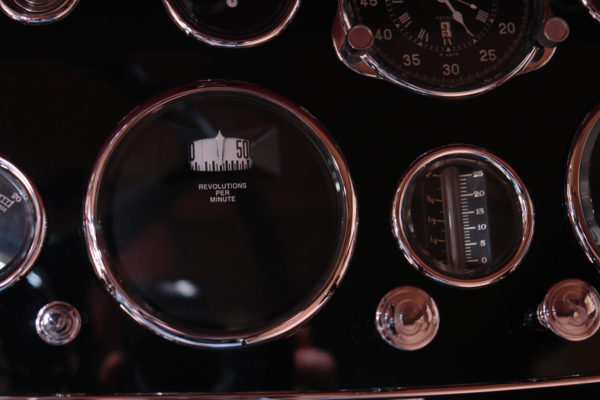
LRB: So how long did the watch development take from concept to completion?
JW: Oh, it was supposed to be super-simple. It was in my head for decades, eventually, I was like fuck it, I have to make it, it has to get done. So I sit down Svend Andersen and a few other unique, one-off dudes … I brought my roughed-out sketches, and like, it’s kind of where I was going, like I’d really love to have one, but price points they were quoting me were outside of my reality. Then we partnered with my shop at Autodesk on some new CAD software, and I have proper engineers that know what the heck they’re doing, but usually, I can do Southpark CAD, enough as a communication tool for the client or my renderer or the engineers. But they volunteered to send a tutor down with the shop once a week. So I was like “Hmm.” Instead of doing automotive parts, because that can be knocked out in-house, I’m gonna pursue the watch. So for a year, I played with and educated myself with trial-and-error, just going for it and designing it, and 3D printing and machining shit, duct-taping 3D polymer and just kind of kept going. Then I talked my wife into being my partner and letting me do it. So I went for it, and it was a shitshow. Doing business in Switzerland as an independent American means showing up and saying “I want ten thousand watches.” It’s a total nightmare but it was cool peek behind the curtain because I’d met everything from dudes basically with trench-coats and watches to big corporate meeting rooms filled with twenty people. But something felt really wrong on both ends of the spectrum. The partner I really wanted, that I knew their track record and knew they had a great relationship with Dubois Depraz (Ed. note: Dubois Depraz built the jump hour module found in the Duesey), they were like, “Yeah, no, our minimum skew is five hundred units, and we like to do five skews per order,” and I was like “Nah.” So I was resigned that it wasn’t gonna happen, and as the meeting was ending the CEO came around kissing babies and handing out business cards in all the little meeting cubicles, he ducked into ours as we’re wrapping up; “Hi, nice to meet you.” As we’re walking to the elevator, he came back and goes “I know your brand. My friend has one of your trucks in Moscow. They’re amazing! What are you doing here?” And I told him, he was like “No, no, no, come back in. We’ll do it, I think we can scale to what you wanna do.”
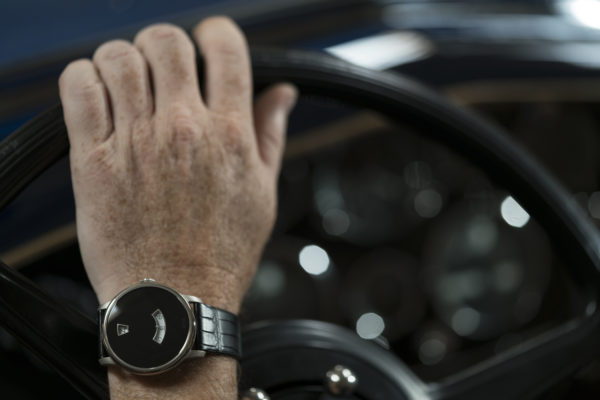
LRB: Was there a single issue that really held up the process?
JW: VantaBlack. You know what that is?
LRB: Yeah, Anish Kapoor. Did you want to use that?
JW: Fuck yeah, I did. Would have been so cool. I got approval from the British government to export it because it’s technically a military material and you have to get approved where I’m using it in this segment, I’m not building fucking aerospace optics, or whatever. Then I got approval from the U.S. to import it. And then the Swiss Watch Federation shut me down. Because it’s a nano-particle and they blanket knee-jerk all nano-particle carcinogens.
LRB: There have been other watches that have used-
JW: Yeah, but they aren’t part of the Federation. And technically it’s a bit of a liability the more I researched, because down the road for service if it doesn’t go to a clean room with a respirator on the technician, it can be a health problem. Because it’s basically a forest of nano-particle trees, so if you touch it, it’s fucked.

LRB: Really? I didn’t know that.
JW: That’s why they only used it on the background sandwich layer of those watches. There’s a new VantaBlack though, not VantaBlack but the first competitor to VantaBlack, for which the application process is far more viable. So we went through fifteen different black things to figure out what worked on the dial. Of course, it wasn’t an enamel, it wasn’t paints and powders or DLCs. However, the onyx I ended up really digging. Actually, even more than VantaBlack, because the way the light plays is kind of cool.
LRB: Did designing and building your own watch influence how you perceive watches? How you collect them?
JW: No, not really. I mean, I think when designers don’t have constraints, their work generally … that’s their worst work. Even my, probably my favorite industrial designer, Raymond Loewy, when he did projects for himself … just no restraint because there was no constraint. In automotive we have it but not as tight. So with watches, the mandates and the limitations, the confines, I liked, as it creates a very clear focus of what we want to do, like legibility, geometry, ergonomics, sizing and packaging of movements. I really like all that. I mean, I want to screw it up a little bit but that’s why I did a jump hour. At least to last year, they were not in vogue and then, it’s just crazy how many came out this year. But that’s really what I mean. But no, as a collector, I’m not all over the place. I mean, I’ve got beat-to-shit, no name, ’40’s watches I paid 40-50 bucks for, up to stupid stuff. So I’ve always collected from purely a design. I don’t know reference numbers on my habits or … I really could give a shit. To me, it’s always about the craftsmanship and the design. The watch is totally irrelevant and we all know that.
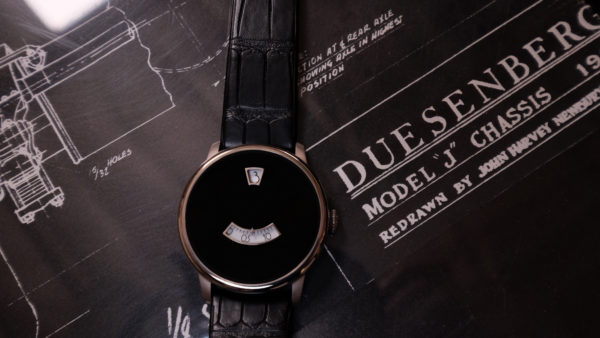
LRB: You obviously work a lot with Toyota. And Toyota, from most people’s perspective, produces very utilitarian vehicles. But what you’re doing with ICON, you’re elevating that utilitarianism into something higher. Do you see that happening in the watch industry?
JW: Oh sure, I mean I … I think, in unison, the whole industry’ is doing that. From MB&F’s wacky shit to [Laurent] Ferrier’s simple elegance, to the new Glashütte line, I think with everyone that’s the thing. And, you know, there’s an ass for every seat, as Henry Ford said, so it’s interesting to see the spread and the styles and the genres and all that.
LRB: How has the feedback been among your long-time clients?
JW: Well actually, what I really dig is how people don’t really know my brand, like they’re not into what we’re doing. They think of us for 4×4’s. They think of the Bronco or a Red Toyota. So it would have been if I was focusing on that customer base, which is our majority versus we do a lot of one-offs from Ferrari to power wagons, those are my favorite. If was doing this solely from a business perspective, I would have done a Bronco watch or a 4×4 watch, but I’m not that smart and I don’t want to. I’m more coming at all of those from the design of our utility vehicles, where the idea is bespoke utility. Evolve their capability, make them relevant for modern day and then make it so that geeks like me wanna touch it. Make all the materials and bring all the suppliers from aerospace, marine, and railcar and fuse them all together in a cohesive design, that’s what I really dig. So, the majority of the buyers are new to the brand and aren’t my automotive clients. Which is kind of cool.
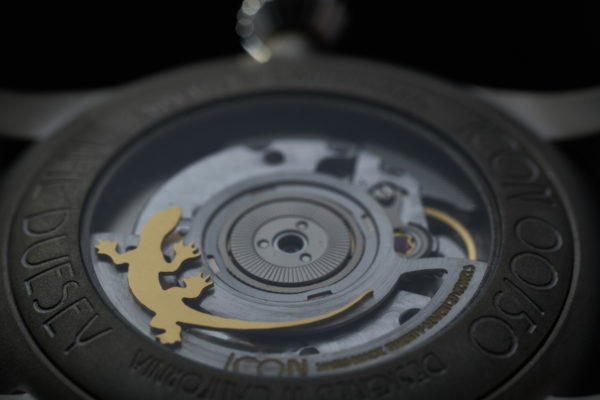
LRB: I mean that’s bringing a whole new audience into what you do.
JW: Yeah, totally. And feedback’s been kick ass. I’m tickled pink … one guy who is a client, we showed it to his dad, his dad put in on and never gave it back. His dad has a Duesenberg and he’s like, “Oh shit.” So then he called back and ordered another one. Another guy received it, and he said, “Way better than I thought. Like I was consigned to what I thought cause it’s pretty.” He had seen my prototype photos which were rough. In fact, here’s a valuable lesson I learned in the process. Keep your mouth shut. Find it on your own, bring it to market. Done, ready to rock inventory. I feel I wasted a lot of my gunpowder because I was so excited. So I came around and showed everybody the prototype. Stupid. And got all the love from the media but didn’t have product in stock.
LRB: So would you say that’s a big difference between the watch and the car industry? Because I know in the car world concept vehicles are a constant presence and a huge marketing tool.
JW: Yeah, in the car world, we do that all the time. Either that or it needs to be done smarter than I did. I don’t know. But next time, I’m just gonna self-finance everything. Not try and get presales. Not talk to anyone until it’s done and ready to rock.
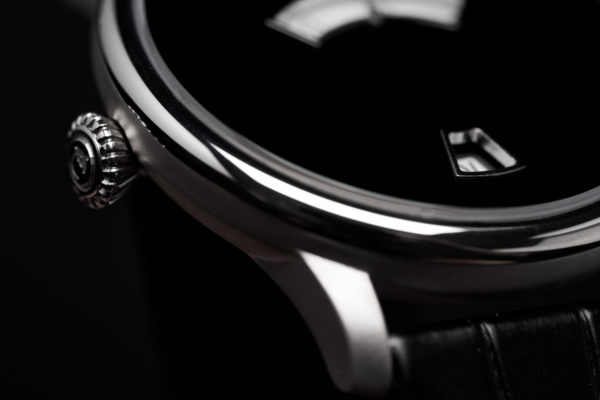
LRB: What kind of other noticeable differences were there between the car industry and the watch industry that you didn’t expect?
JW: Well, in the automotive industry the supplier network, once you’re in the industry, is quite open and communicable and accessible. I could call someone at another manufacturer and say, “Dude, I really dig that such and such and who’s your supplier for that?” And he’s gonna tell me. Or they’ll reach out to me and do the same thing. Or, shit I gotta get this machined. Who’s the rock star in aluminum and I’ll send him to my guy. In the watch world? Eh—no one seems as open.
LRB: So, looking at the ICON Duesey, we see some Jaquet Droz in there, we see hints of Cartier, maybe some Bell & Ross. What kinds of watches helped form your design?
JW: I like French military watches for sure, World War I, World War II. I love Jaquet Droz. Those I’m such a nerd about. I spent so much time thinking about, really, all the details. In my head, the watch was purely based on the car and the design language of the ’30’s as well. I love Streamline Moderne, Art Nouveau, Art Deco, all that just chubs me right up.
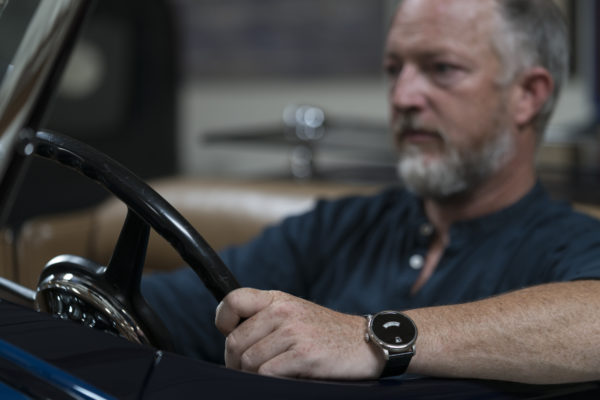
LRB: So, will there will be another ICON watch?
JW: Hell yeah, hell yeah.
LRB: Are you trying to build out a whole collection?
JW: I don’t really know. But, I doubt in volume. I think I’ll continue to do runs of 50 or 100. Just look at my vehicles, I don’t have any dealers or reps. I don’t have salesmen. I have none of it. I enjoy that direct relationship, and the feedback it brings, and the tribal unity it brings. Also, I modeled [the Duesey] from anywhere from 39 mm to 44 mm. And, I ended up at 42 mm. But, the way the case body is, it’ll sit a little bit deeper and wear a little smaller. And, I think I might creep down to like 40 mm next time. But, it depends on which design I do.
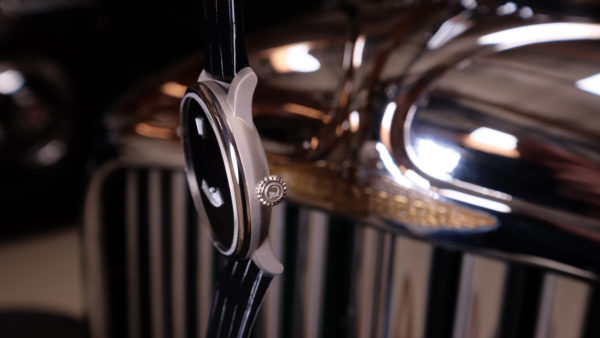
LRB: What other watches do you have in your collection? How many watches do you own?
JW: Probably around 120. I’ve been on a run for a couple of years with trench watches. I really appreciate those. They’re heavily undervalued right now. I’m a sucker for a good story. So, if it’s a neat watch and it’s got a cool story, I’m in. I’m also really into world times too. That’s what I’m trying to decide for my next [ICON] watch because I’m floundering all over the place. I either want to do a GMT with a sub-dial, like a large second sub-dial at six. I haven’t even searched the complication yet, so I might get screwed and it may not exist. But, a 12 hour primary, with a 24 hour GMT subdial, it could be kind of cool. Or, if not a 24, maybe then just the dark, light chapter ring on the sub could help you understand night and day, in the alternate. Or, maybe a world time. I don’t know yet.
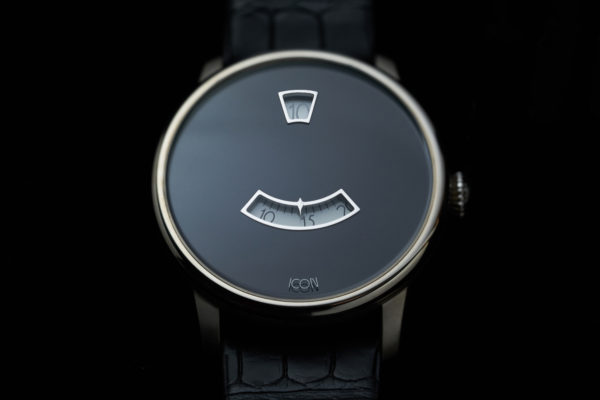
The ICON Duesey is priced at $11,500 and is limited to 50 total pieces. You can learn more about Jonathan Ward and ICON4X4 here.

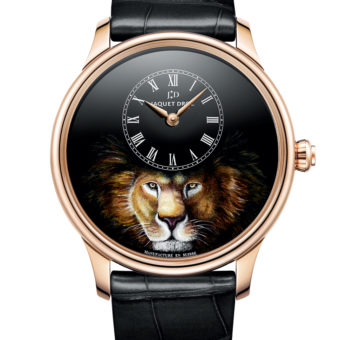
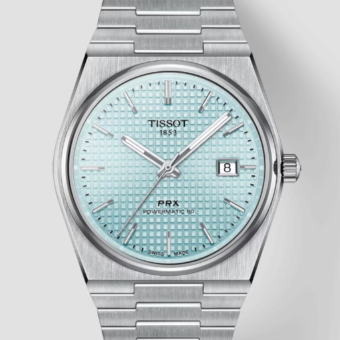

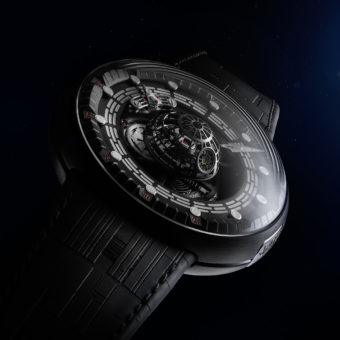
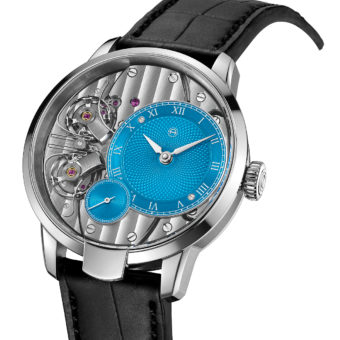
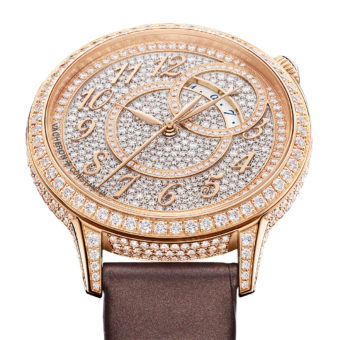
Of course not a new design whatsoever. On a different note: am I silly to expect professional language in an article about watches?
Is this a joke? This guy is serious with that “design”? He couldn’t be. That is hot garbage – an unimaginative, uninspired, overpriced scam to get over on people.